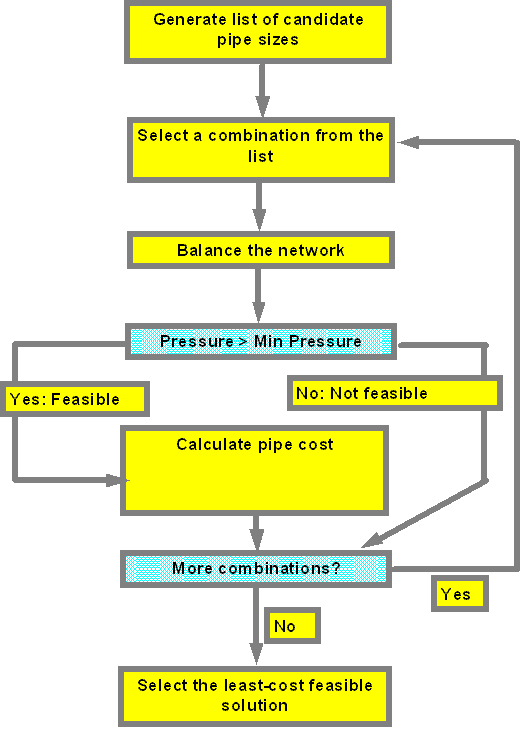The techniques to reduce the number of candidate solutions can be combined into an enumeration algorithm as shown in the flow chart below. The grouping of pipes is done by the user.
Enumeration Algorithm Flowchart

The first part of the algorithm performs the test on size ranges, and selects already a relatively inexpensive solution. If in the course of this search a non-functional solution is encountered, it is entered into the queue of non-functional solutions.
The second part of the algorithm enumerates all size combinations. For each combination the total cost (excluding pumping energy to overcome friction which is not known until the system is balanced) is calculated. If such cost is higher than the cost of the so far best functional combination, i.e. if the combination fails in the cost test, the combination is discarded. If the combination passes the cost test, the combination is compared with previously generated combinations, which did not meet the pressure requirement. If a combination is found in the queue of non-functional solutions which has all sizes larger or equal to the sizes in the combination presently being tested (i.e. if the combination fails the size test), the combination is discarded. If the combination passes the size test, the pressure distribution is calculated for one load case at a time. If the combination does not meet the pressure requirement of a load case, the combination is entered into the queue of non-functional solutions, and the algorithm proceeds with the next combination. If the combination meets the pressure requirements for all load cases, it becomes the least expensive functional combination.
The node method employed in the computation of the pressure distribution makes it easy to test the effects of elimination of pipes. To accomplish this, the list of candidate pipe sizes for a group may include a diameter of zero at zero cost.